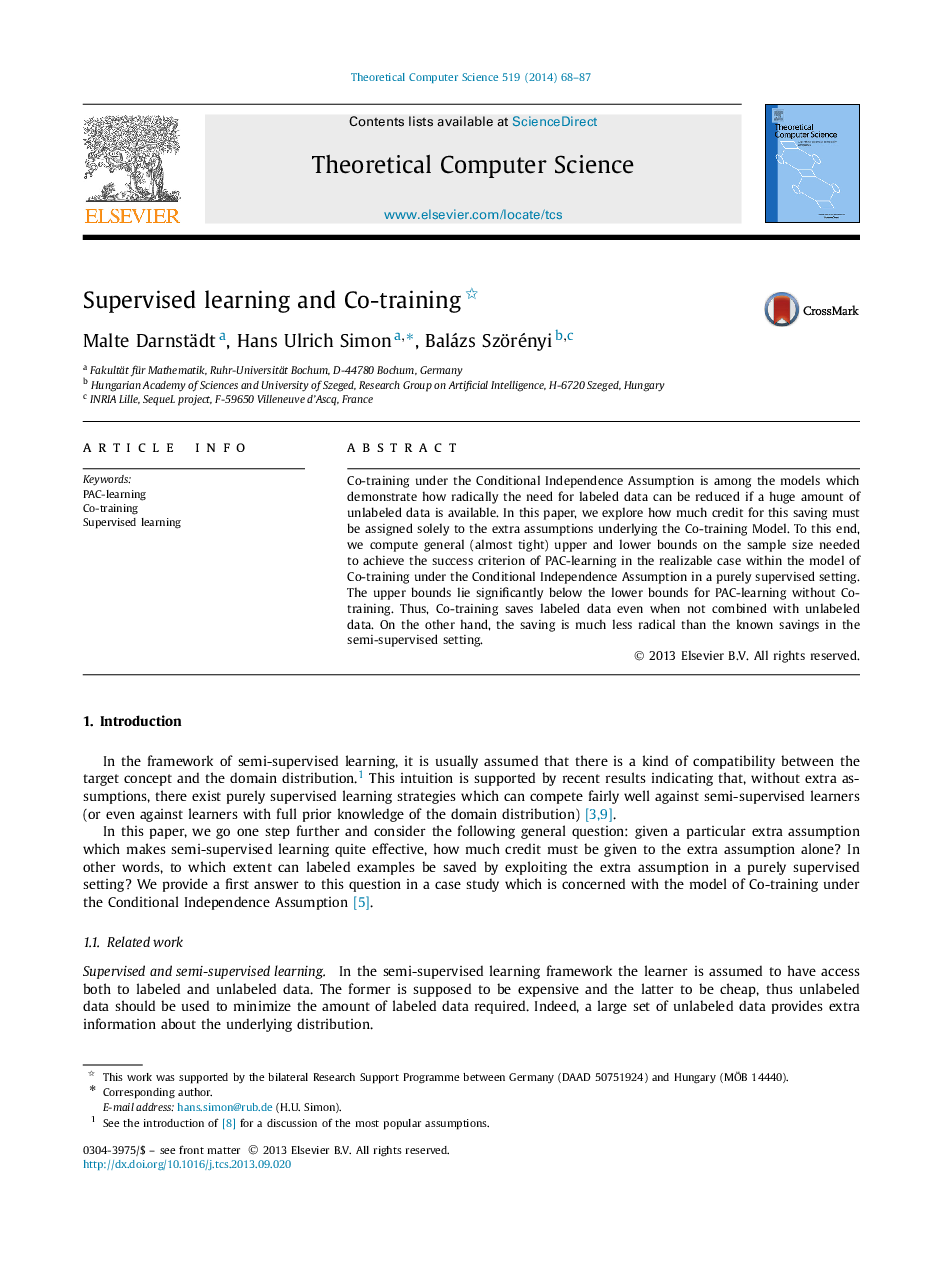| Article ID | Journal | Published Year | Pages | File Type |
|---|---|---|---|---|
| 438402 | Theoretical Computer Science | 2014 | 20 Pages |
Co-training under the Conditional Independence Assumption is among the models which demonstrate how radically the need for labeled data can be reduced if a huge amount of unlabeled data is available. In this paper, we explore how much credit for this saving must be assigned solely to the extra assumptions underlying the Co-training Model. To this end, we compute general (almost tight) upper and lower bounds on the sample size needed to achieve the success criterion of PAC-learning in the realizable case within the model of Co-training under the Conditional Independence Assumption in a purely supervised setting. The upper bounds lie significantly below the lower bounds for PAC-learning without Co-training. Thus, Co-training saves labeled data even when not combined with unlabeled data. On the other hand, the saving is much less radical than the known savings in the semi-supervised setting.
